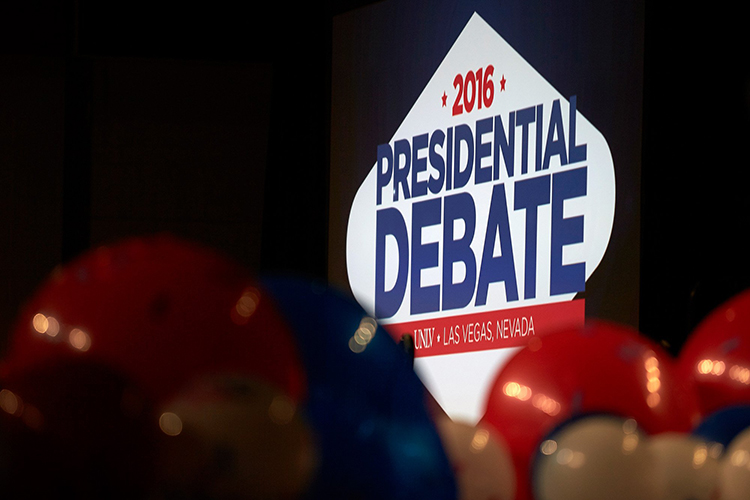Would the leading candidates double down on city priorities?

Hosted by the University of Nevada, Las Vegas, Wednesday evening’s debate was the leading candidates’ last opportunity to speak to a national audience before Election Day. (photo credits: UNLV Photo Services)
This post was co-authored by Michael Wallace and Stephanie Martinez-Ruckman.
On Wednesday evening, the third and final presidential debate of this election cycle was broadcast to millions of American households nationwide. Two topics of particular interest to city leaders, the economy and immigration, were featured prominently throughout the debate as expected. Here’s what we were listening for on those important topics:
The Candidates’ Vision for Main Street
Cities are the engine of our nation’s economy. From roads and transit to parks and libraries, to law enforcement and emergency services, cities create the conditions that drive new business, spur innovation, and attract talent and investment.
From NLC’s 2016 State of the Cities report, we know that economic development and entrepreneurship are at the top of the list of issues important to local leaders. Because at the local level, economic development and quality of life go hand in hand. Local entrepreneurs and small businesses are essential stakeholders in the success of neighborhoods, helping to create a communities sense of place, and serving as a vital link connecting communities to the larger, global economy.
And we know that economic development in cities is working. Released last week, NLC’s 2016 survey of local economic conditions shows the economy is improving in nearly all cities, with 81 percent of city finance officers reporting that their cities are better able to meet the financial needs of their communities in 2016 than in 2015.
The next president will govern an increasingly urban country and manage an economy that is overwhelmingly driven by what happens in cities. By partnering with local officials, the next president can renew and reinvigorate federal economic development policies and programs that local entrepreneurs are increasingly unable to access and revive direct federal investment in the middle class through funding for workforce training, transitional housing, and community development.
When it comes to the economy, we hoped the two leading candidates would give equal weight to the interests of Wall Street and Main Street. In other words, instead of debating “too big to fail” once again, we instead wanted to know if the candidates thought that federal investments in America’s cities and towns are “too small to succeed”.
The Candidates Vision for Building Stronger Communities
The United States has a long history of welcoming immigrants into our country. Today, immigrants make up 13 percent of the population of the United States, and 17 percent of the workforce. As these numbers continue to grow, programs and services to immigrants and the policy issues surrounding this population continue to be at the forefront for cities. So, where do the two leading candidates stand?
Donald Trump has articulated a 10 Point Plan that furthers his vision of prioritizing jobs and wages for Americans while also establishing immigration controls that would strongly vet those applying for relocation and citizenship. His approach includes building a physical wall between the U.S. and Mexico to strengthen that border, as well as biometric entry-exit visa tracking systems.
Meanwhile, Hillary Clinton has called for the introduction of comprehensive immigration reform with a pathway to full citizenship within the first 100 days of her administration. Her approach includes protecting families and expanding access to affordable health care to all, regardless of immigration status.
As we continue to listen to the candidates detail their approaches on this important issue, city leaders should listen to what they say about sanctuary cities, and the involvement of local resources in their plans. We know that cities and towns are on the front line working with immigrants and integrating them into our communities, so it’s critical to pay attention to how the candidates will support city leaders as you do this important work.
Cities are depending on the candidates to get it right on these two interrelated issues. Without a strong vision for how, as president, the candidates will work with local leaders to build stronger communities and a more prosperous main street, our cities and residents may suffer.
Help us ensure that the voices of city leaders are heard loud and clear in the remaining days of the general election by taking action today and urging the candidates to #StandWithCities. In sending a letter to or tweeting at the next president about the most pressing issue facing your city, we can make sure that the candidates prioritize city issues, like the economy and immigration, in this election and throughout their administration.
 About the authors:
About the authors:
Michael Wallace is the Program Director for Community and Economic Development at the National League of Cities. Follow him on Twitter at @MikeWallaceII.

Stephanie Martinez-Ruckman is the Program Director for Human Development at the National League of Cities. Follow her on Twitter at @martinezruckman.
